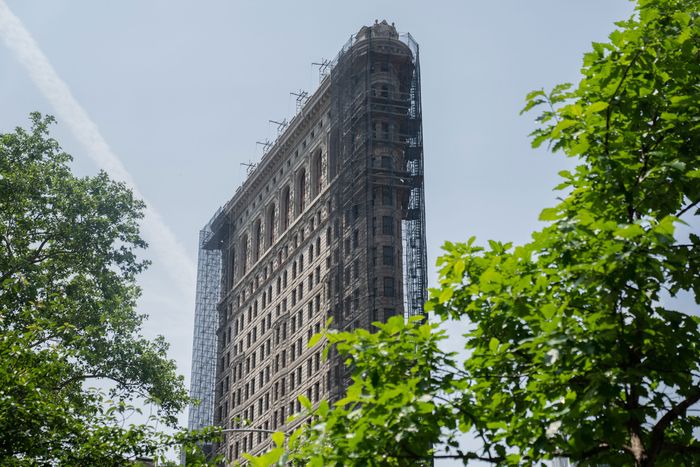
Want an apartment that narrows to a point? The Flatiron Building, whose prow has nosed up Broadway across 23rd Street since its completion in 1902, has housed its last office tenant and is going residential, The Real Deal first reported this morning. (The owners won’t say whether that means condos or rentals, but it’s a fair guess that it will be the former.) It’s a joint venture with the Brodsky Organization, a developer that has bought into the group of four owners that includes the Gural family’s GFP Holdings and the Sorgente Group. It’s happening now because the owners, collectively, are finally in control of their building, after the conclusion of a long partners’ stalemate and then a tumultuous pair of auctions this year. (Calls and texts to Jacob Garlick, the excitable out-of-town bidder who won the first auction, then failed to pay up, remain unreturned six months later.) The new partnership notes that it will have to work closely with the city and the Landmarks Preservation Commission, because the building was one of the first to be landmarked by the city in 1966.
In many ways, it’s just about ideal for conversion, and it’s hard not to think it’ll be an insanely desirable place to live. It’s right next to a great park, surrounded by good food and lively streetscapes. It’s already empty above the ground floor and has been since 20 floors’ worth of Macmillan Publishing imprints left in 2019. The weird shape and comparatively small footprint — less than 11,000 square feet per floor — make it awkward for contemporary offices, but those very qualities, in the hands of a careful architect, will make for wildly desirable apartments. The windows are big, the ceilings are high, and the narrow floors receive natural light all the way across. A custom-built triangular kitchen island set at the pointy end of a floor, right in front of the curved window that faces the Empire State Building, will surely rank as one of the city’s great places to have breakfast.) The elevators are poky by modern office-building standards but more than enough for the lighter demands of a residence, and presumably they’ll get upgraded anyway.
As will a lot of other systems. The building is essentially sound but in need of many millions of dollars’ worth of work on its HVAC and the like. The upper floors have been stripped of their Macmillan-era rabbit-warren treatments and been given fairly basic finishes. The lobby has, over the years, been through multiple cycles of modernization and is getting another, so there’s not much original detail to be found there. A lot of conservation and restoration was done at the building in the 1990s (new windows, terra-cotta work) and the building is once again wrapped in scaffolding as another round begins. As of this spring, the interior floors themselves were mostly stripped, and the big single staircase at the building’s core is being demolished and rebuilt as a dual stair to bring it up to code. (Aesthetically, that’s a shame; it’s a brawny beauty. But looks get you only so far in a fire.) The only marketing problem is likely to be some crosstalk with a building down the street that calls itself Flatiron House. If the partners counter that with a big banner down the scaffolding in the coming months, advertising the availability of those condos, it’ll be a nice bookend, historically speaking, to New York’s very first illuminated billboard, lit up on this very spot a decade before the Flatiron went up.





